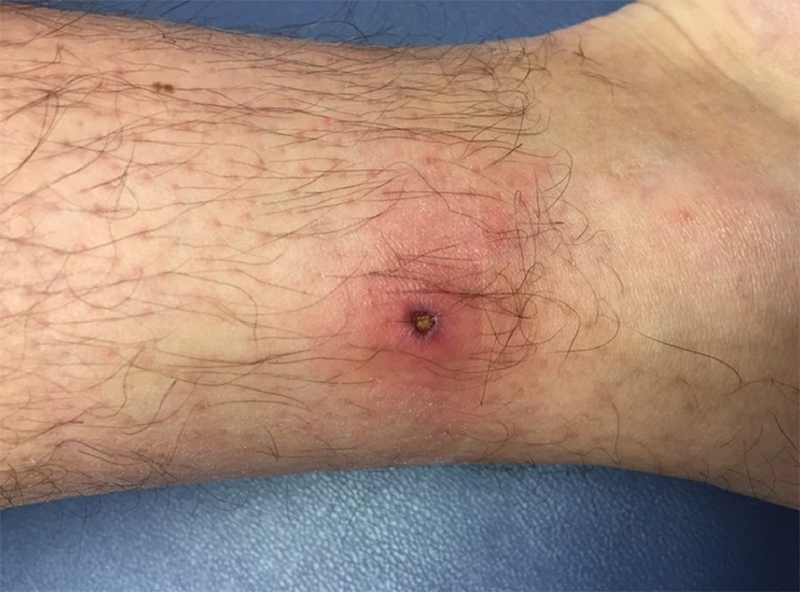 Ticks are often very tiny and hard to see. Some ticks transmit organisms that cause serious illnesses, including Lyme disease and Rocky Mountain spotted fever. If a person is bitten by a tick, the first thing to do is to remove it promptly and carefully, using tweezers while wearing protective rubber gloves, if possible, to grasp it by its head and gently pull it out. Once the tick has been removed, the area should be washed with soap and water, and antibiotic ointment or an antiseptic should be applied. The person handling the tick should wash his or her hands. If part of the tick stays in the skin, or if the person develops a rash or flulike symptoms, medical help should be sought. The symptoms of infection caused by a tick bite may not appear until days or weeks after the bite.
Ticks are often very tiny and hard to see. Some ticks transmit organisms that cause serious illnesses, including Lyme disease and Rocky Mountain spotted fever. If a person is bitten by a tick, the first thing to do is to remove it promptly and carefully, using tweezers while wearing protective rubber gloves, if possible, to grasp it by its head and gently pull it out. Once the tick has been removed, the area should be washed with soap and water, and antibiotic ointment or an antiseptic should be applied. The person handling the tick should wash his or her hands. If part of the tick stays in the skin, or if the person develops a rash or flulike symptoms, medical help should be sought. The symptoms of infection caused by a tick bite may not appear until days or weeks after the bite.
Bites caused by a small insect called a tick. All ticks attach themselves to any warm-blooded animal that brushes by them, including humans. The risk of receiving such a bite depends on the area of the United States in which a person lives, whether he or she spends much time in wooded areas, and preventive measures taken to avoid tick bites.
A wound produced by a bloodsucking tick. Adult ticks (and immature nymphs) may be vectors for infectious diseases, including Rocky Mountain spotted fever, Q fever, tularemia, borreliosis, babesiosis, ehrlichiosis, anaplasmosis, and Lyme disease. They can also produce tick paralysis, a disease that may mimic Guillain-Barre syndrome.
